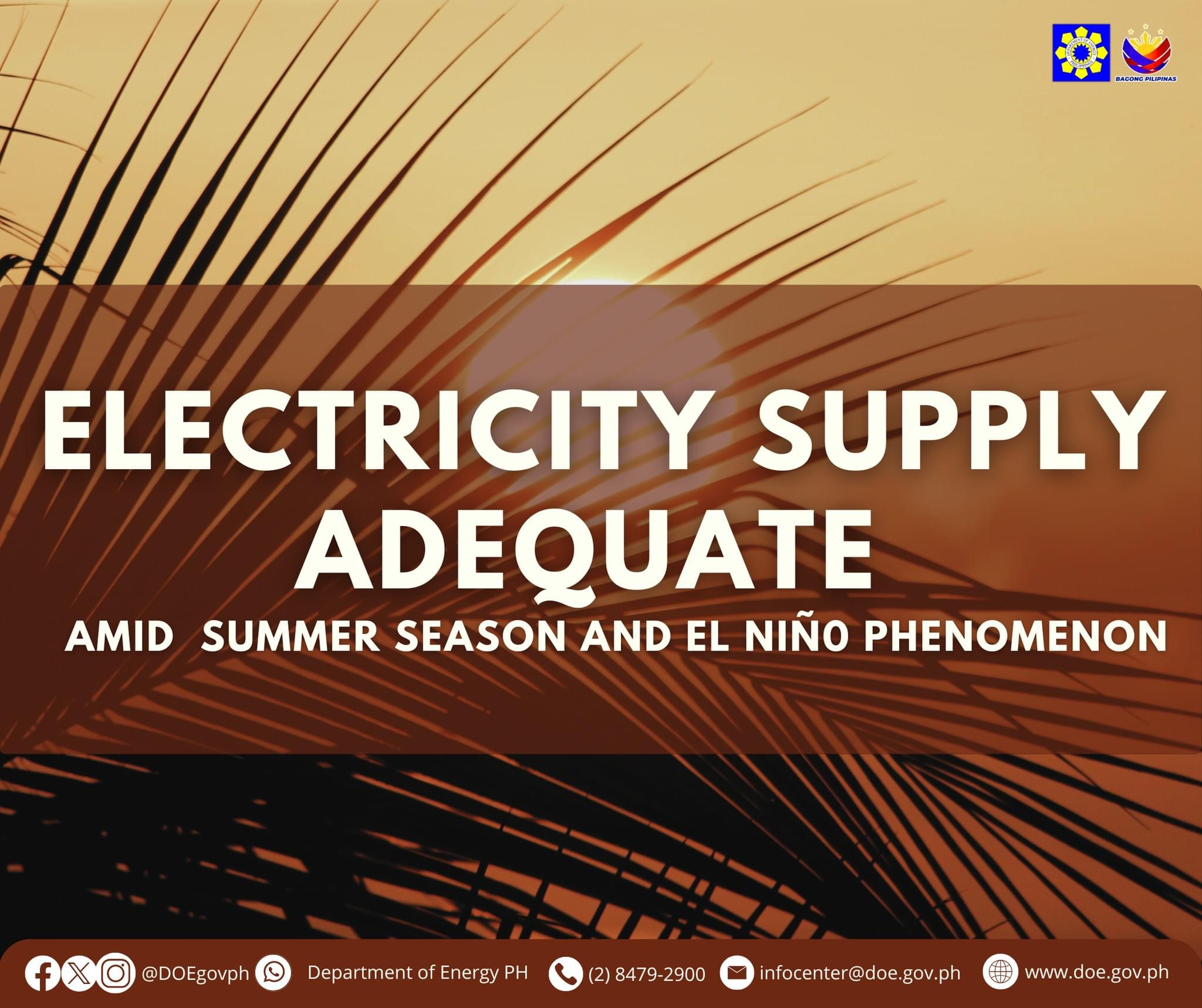
With the onset of the warm and dry season coupled with the El Niño phenomenon, the Department of Energy (DOE) continues to monitor the country’s power situation to ensure energy security, especially during the next three months when scorching temperatures are felt.
At the same time, the DOE is calling on the public to continue practicing energy conservation to minimize the cost of running oil-based power plants during this period.
In particular, and in order to avoid alert notices, the DOE closely monitors the integrity and reliability of the grid by continuously updating the power outlook that considers any changes particularly in the operations of power generating units. As necessary, the DOE coordinates with concerned government agencies to facilitate timely approval of regulatory requirements for the completion of power facilities.
Further, the injection of power to the grid of generation facilities under testing and commissioning are allowed to provide additional capacity to the grid. The National Grid Corporation of the Philippines (NGCP) is likewise directed to expedite completion of this activity.
The NGCP, as the Transmission Network Provider (TNP), has also been reminded consistently of the completion of the major transmission projects by the 1st half of 2024, such as the Hermosa-San Jose 500 kV Transmission Project and Cebu-Negros-Panay (CNP) 230 kV Stage 3 backbone project. The CNP is expected to be finished by the end of March 2024 as committed by the NGCP.
The Independent Electricity Market Operator of the Philippines (IEMOP), as the Market Operator, on the other hand, handles the Wholesale Electricity Spot Market (WESM) registration of the newly operational power generation facilities.
Meanwhile, power generation companies are reminded to comply with the DOE-approved Grid Operating and Maintenance Program and forced outages within the allowance set by the Energy Regulatory Commission (ERC) in accordance with the applicable guidelines as well as ensure that their committed power generation projects will meet target commercial operation date.
Accordingly, the DOE ensures that the NGCP and all distribution utilities (DUs) are ready to activate and implement their Interruptible Load Program (ILP) while the National Electrification Administration (NEA) is providing the necessary assistance to the electric cooperatives (ECs) in the implementation of their ILP.
Based on the latest DOE simulations, with hydroelectric power plants running below capacity level due to the El Niño phenomenon, the Luzon grid might experience Yellow Alert in April and May while the Visayas and Mindanao grids will have normal reserve level during the second quarter of the year. Nonetheless, the DOE ensures that any developments are immediately considered in the outlook to implement contingency measures.
“The summer period exerts significant pressure on electricity demand due to increased cooling needs, leading to peak demand shifts in consumption and infrastructure strain. We are, therefore, closely coordinating with all the stakeholders to carefully manage and plan for the effects of the summer period and the on-going El Niño to ensure reliable and sustainable electricity supply at the same time we request the support of everyone during this challenging period by being conscious in our use of electricity,” Secretary Raphael P.M. Lotilla said. ###
